What is E-E-A-T? A Guide to Mastering E-E-A-T for Better SEO
Gabriela Jhean
E-E-A-T is an acronym for Experience, Expertise, Authoritativeness, and Trustworthiness. It is a framework developed by Google to help content creators (and Google Search Quality Raters) evaluate the quality of content.
But what does it really mean for your SEO?
And how do you make sure your content aligns with it?
In this guide, we’ll simplify the concept of Google E-E-A-T and show you how to leverage it for better content and stronger SEO.
Google E-E-A-T Guidelines: The Four Pillars of Quality Content
Google’s E-E-A-T guidelines are built upon four key pillars. These components work together to create high-quality, helpful content for users.
Let’s explore each of these pillars in detail.
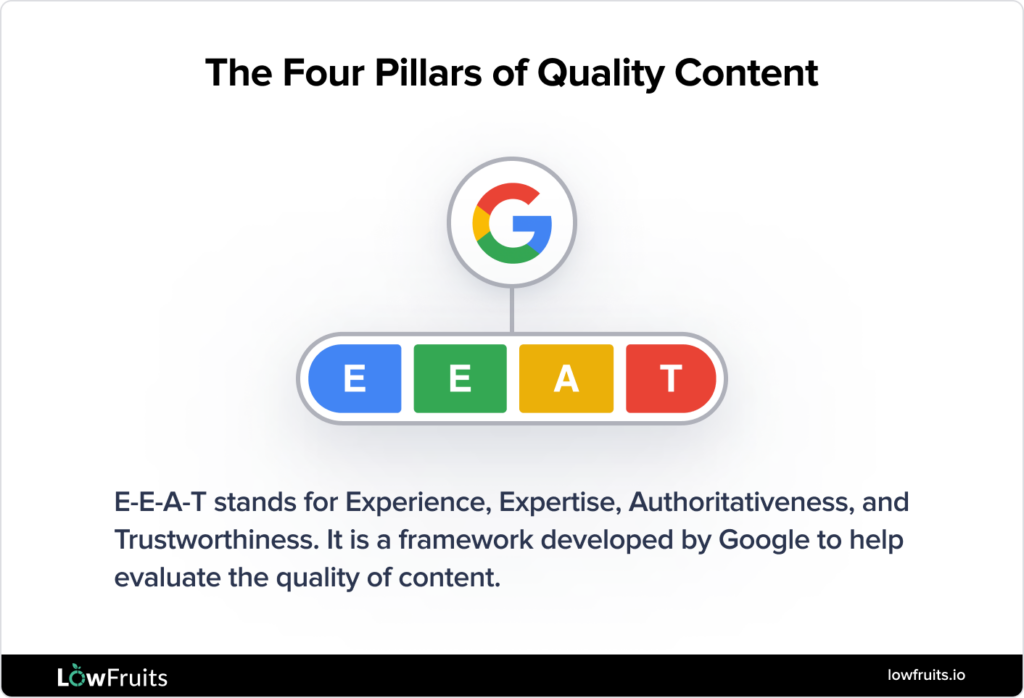
Experience
The first pillar of E-E-A-T is experience. This refers to the level of knowledge and first-hand experience the content creator or website has in the subject matter being discussed. It’s essential that the information provided is based on life experience, not just theoretical knowledge.
An example of experience in E-E-A-T:
Imagine you’re looking for travel advice on hiking in a specific national park. A website run by park rangers with years of experience patrolling the trails would hold more weight than a general travel blog. The park rangers have first-hand knowledge of trail conditions, hidden gems, and potential hazards. These insights provide a unique perspective you wouldn’t find from a blogger who’s never been there.
Expertise
Expertise goes beyond experience; it’s about the depth of knowledge and understanding the content creator or website has on a particular topic. This can be demonstrated through educational qualifications, certifications, or a proven track record of expertise in the field.
An example of expertise in E-E-A-T:
Let’s say you’re researching the legal aspects of starting a business. An article by a lawyer specializing in business formation would demonstrate more expertise than a general legal blog post. The lawyer’s in-depth knowledge of legalities surrounding business structures, licensing, and regulations would provide a more comprehensive and trustworthy resource.
Authoritativeness
Authoritativeness is about the credibility and reputation of the content creator or website. It measures how well-respected and trusted the source is within the industry or community. This can be established through factors like the website’s domain authority, the author’s reputation, and the overall quality and relevance of the content.
An example of authoritativeness in E-E-A-T:
Imagine researching a specific art movement. A blog post by an art enthusiast might be interesting, but it wouldn’t hold much authority. In contrast, an article published by an art historian with published works and curated exhibitions would be considered more authoritative. These sources have established reputations for scholarly research and are recognized experts in their field.
Trustworthiness
The final pillar of E-E-A-T is trustworthiness. This refers to the content’s accuracy, reliability, and the website’s commitment to providing truthful and transparent information. Factors like transparency, privacy policies, and the absence of deceptive or misleading content can contribute to a website’s trustworthiness.
An example of trustworthiness in E-E-A-T:
Let’s say you’re researching the causes of climate change. A website with sensational headlines and lacking cited sources would appear untrustworthy. In contrast, a website from a reputable scientific organization with clear authorship information, links to credible research studies, and a transparent fact-checking process would be easier to trust. These elements help you feel confident in the data and page quality.
What Is YMYL?
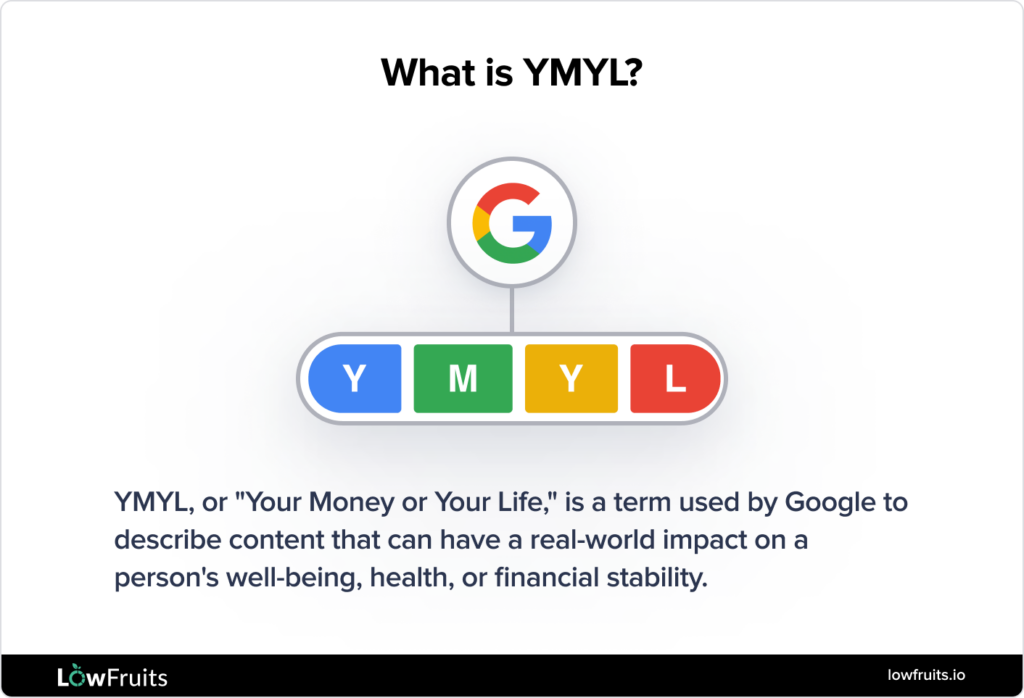
YMYL, or “Your Money or Your Life,” is a term used by Google to describe content that can have a real-world impact on a person’s well-being, health, or financial stability. This includes topics related to:
- Medical and health information
- Financial advice and services
- Legal advice
- News and current events
- Civic and government information
For YMYL content, Google places an even greater emphasis on E-E-A-T, as the potential for harm is higher. Websites and content creators dealing with YMYL topics must send stronger E-E-A-T signals to rank well in search results.
Is Google E-E-A-T a Ranking Factor?
While Google has not explicitly stated that E-E-A-T is a direct ranking factor, it’s widely accepted as a crucial component of their overall quality assessment algorithm. This means it can indirectly influence your search rankings.
By focusing on creating content that aligns with the E-E-A-T guidelines, you can improve your chances of ranking higher in search results.
Is E-E-A-T Still Important for SEO in 2024?
Google E-E-A-T continues to be a critical factor in SEO in 2024.
In fact, it’s even more prevalent as AI-generated content infiltrates the search landscape.
Here’s why:
Fights Disinformation
E-E-A-T acts as a filter against misinformation, which is common with AI-generated articles. Tools like ChatGPT can’t fact-check like humans, making it easier for unchecked misinformation to spread.
Websites with strong E-E-A-T are more likely to produce accurate and credible content, while those lacking these qualities raise red flags for search engines.
By prioritizing content from established experts, Google helps users navigate the web with confidence.
Builds Trust
By adhering to Google E-E-A-T guidelines, you can establish your website as a reliable and trustworthy source of information. E-E-A-T incentivizes content creation by experienced writers, leading to content users can confidently rely on.
Promotes a Positive User Experience
Focusing on E-E-A-T also promotes a positive user experience (UX). High-quality, trustworthy content keeps users engaged. They’re more likely to spend time on your site, return for future information, and share your content with others. This benefits your audience and sends positive signals to search engines about the value of your content.
Ultimately, a positive UX can increase your rankings and overall SEO.
How to Improve Your Content With Positive E-E-A-T Signals
Now that you understand Google E-E-A-T, let’s explore strategies for its implementation.
1. Know Your Audience and Decipher Search Intent
Understanding your target audience and the intent behind their searches is crucial for creating content that aligns with E-E-A-T.
Conduct thorough research to discover your audience’s pain points, questions, and needs. Then, perform a SERP analysis to determine what they’re actually looking for when they perform a search.
This strategy will help you create content that is genuinely helpful and relevant, rather than just attempting to game the system.
LowFruits streamlines the keyword research and SERP analysis process, so you can identify and create content that resonates. When you’re in the KWFinder, you can View the SERP to see exactly which web pages are ranking.
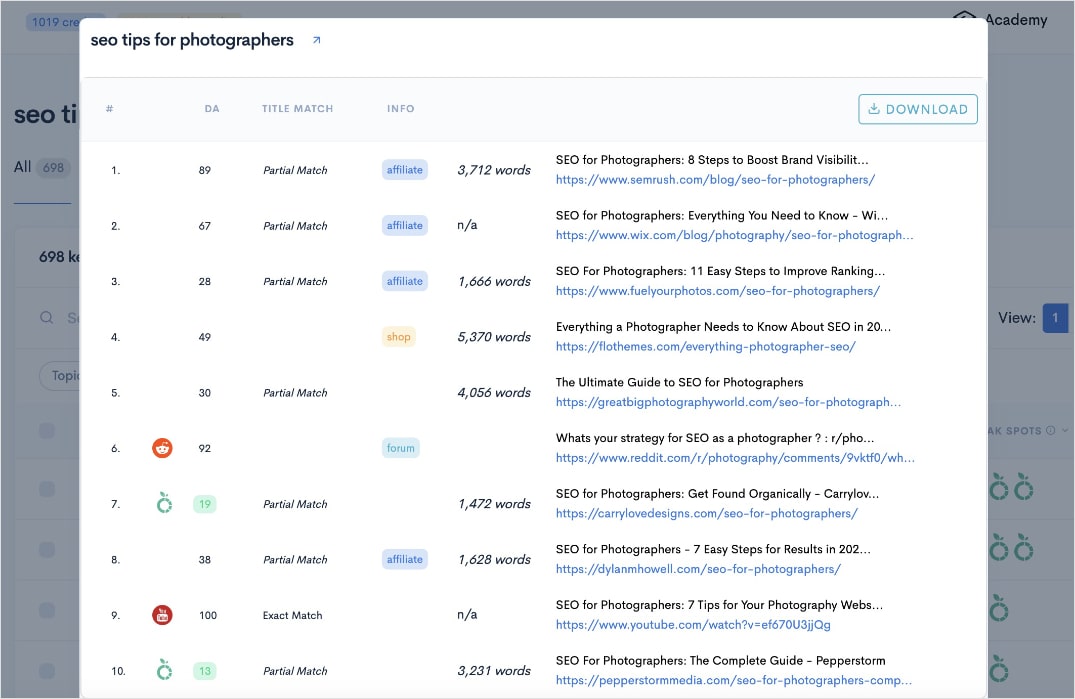
Exploring these results will help you determine the search intent and guide your content creation efforts.
2. Create High-Quality Content
Producing high-quality content is the foundation of a successful SEO strategy.
Ensure that your content is well-researched, comprehensive, and provides genuine value to your readers. Avoid thin, low-quality content that lacks depth or substance.
Not sure what’s considered thin content? There’s a debate about the best word count for SEO, but the reality is, it depends on your keyword.
With LowFruits SERP Analyzer, you can see the word count of ranking pages, allowing you to target an effective length for your new piece of content.
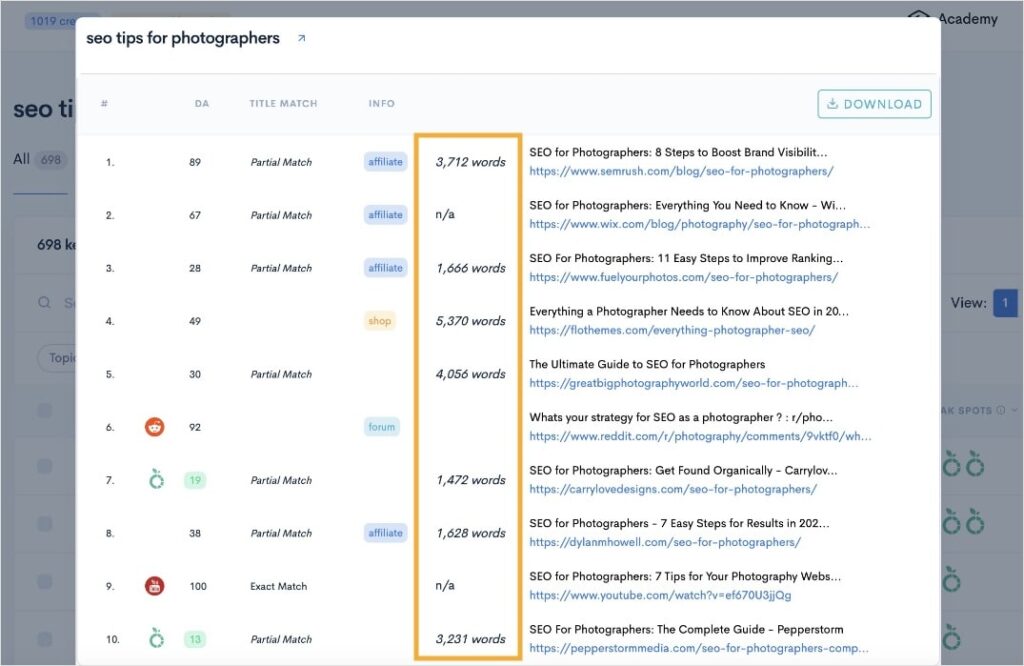
3. Showcase Author Bios That Highlight Your Team’s Expertise
Prominently feature author bios on your website that showcase the expertise, credentials, and experience of your content creators. This helps establish their authority and builds trust with your audience (and search engines).
WordPress Users: All in One SEO is an SEO plugin that can help you craft and display compelling author bios on your website. Their Author SEO Addon contains user-friendly fields for education, credentials, areas of expertise, and more.
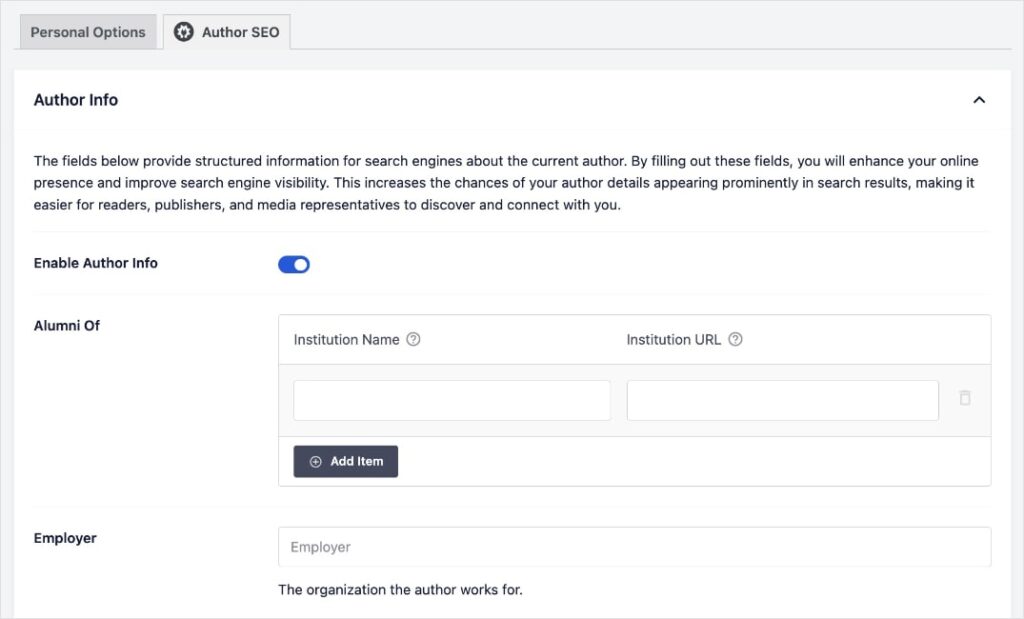
4. Build Relevant Backlinks to Your Content
Earning high-quality, relevant backlinks from authoritative websites in your industry can significantly boost your content’s authoritativeness and trustworthiness. Focus on cultivating genuine relationships with other industry leaders and influencers. Then, link building will feel more natural to you and search engines.
5. Encourage Customers to Leave Reviews
Positive customer reviews and testimonials can be a powerful signal of trustworthiness and credibility. Encourage customers to leave product reviews on your website, social media platforms, and third-party review sites. Respond to both positive and negative reviews in a professional and transparent manner. Social proof can be extremely effective for conversions.
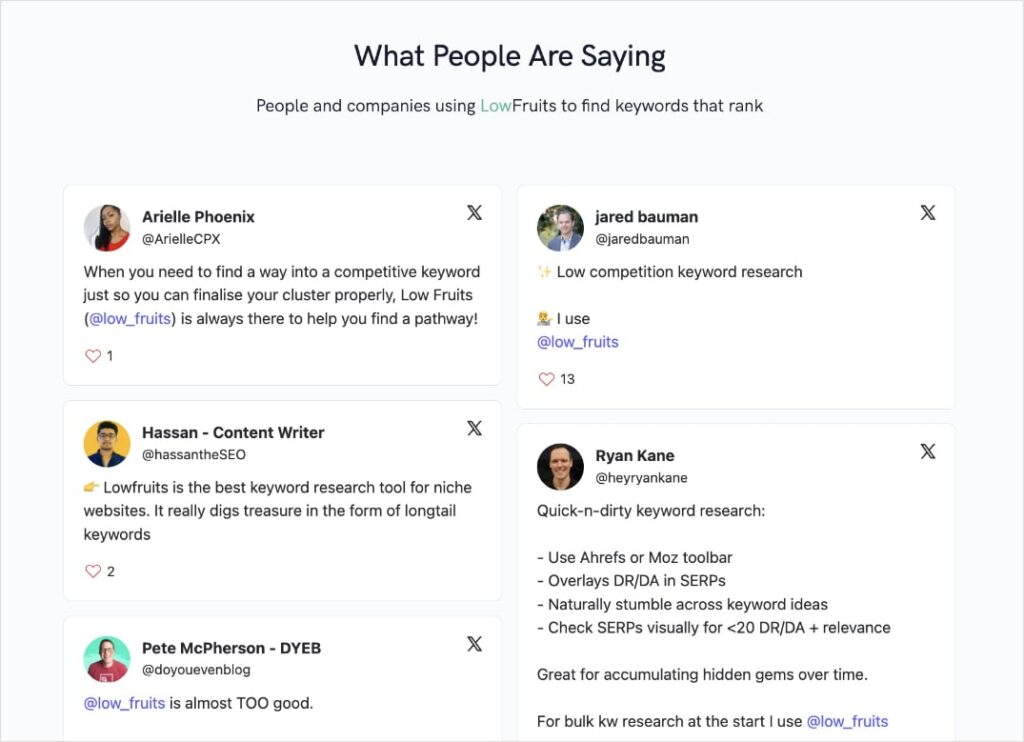
6. Ensure Your Contact Information is Consistent Online
Maintaining consistent and accurate contact information across your website, social media profiles, and other online platforms is crucial for establishing trust and credibility. This includes your physical address, phone number, email, and any other relevant contact details.
7. Foster a Strong Online Presence
Build a robust online presence through various channels outside traditional organic search. This could include social media, industry forums, and guest blogging opportunities. All these venues help reinforce your position within the industry and send strong E-E-A-T signals to search engines.
Case Studies of Successful E-E-A-T Implementation
To illustrate the impact of E-E-A-T, here are some SEO case studies from our friends at All in One SEO.
These real-world examples demonstrate how websites leveraged E-E-A-T to increase their rankings and organic traffic:
- Sporked SEO Case Study of 1,036% YoY Traffic Growth
- Safe in the Seat’s 362% Traffic Growth in 6 Months
- Engram’s 1,811% Traffic Growth in 6 Months
Google E-E-A-T: Your Compass for Better Content and Stronger SEO
In conclusion, E-A-T is not just another buzzword in the world of SEO. It’s a critical framework that signals Google’s increasing emphasis on quality, relevance, and trustworthiness in online content.
By aligning your content with E-E-A-T principles, you can create a strong foundation for your SEO strategy, earn the trust of your audience, and stand out from the competition.